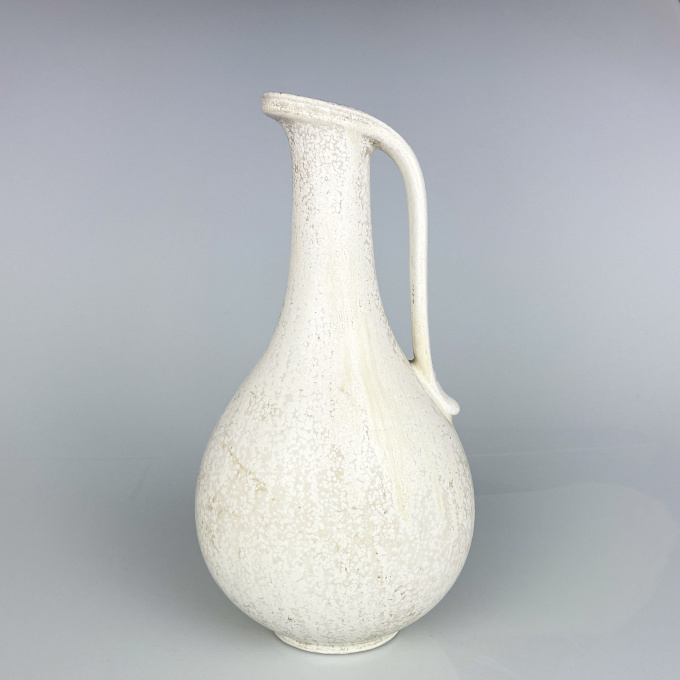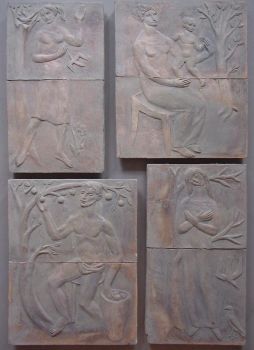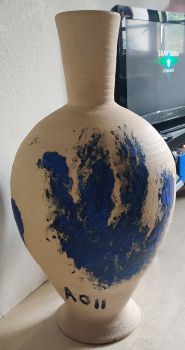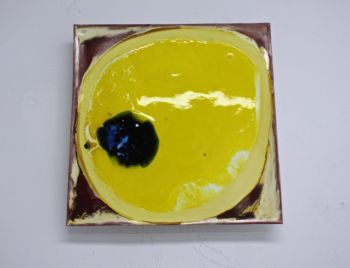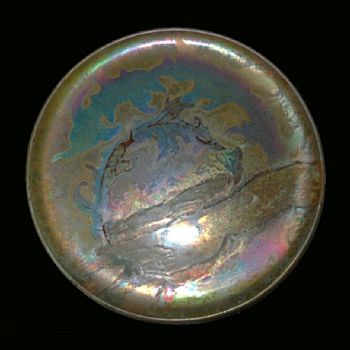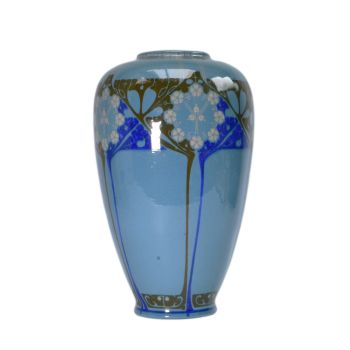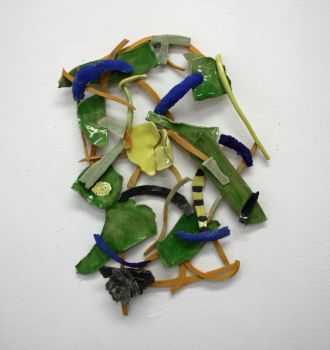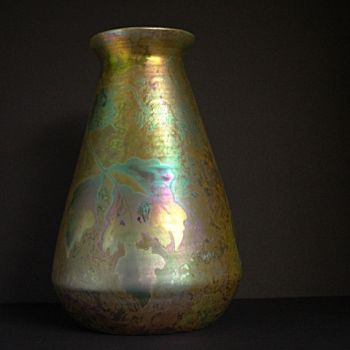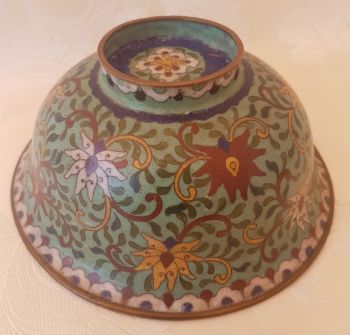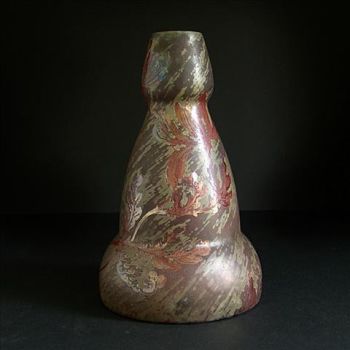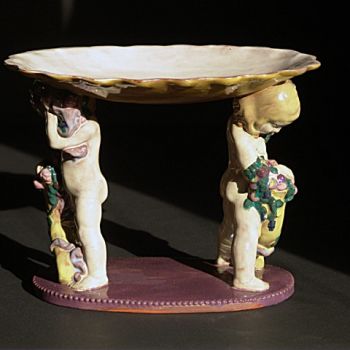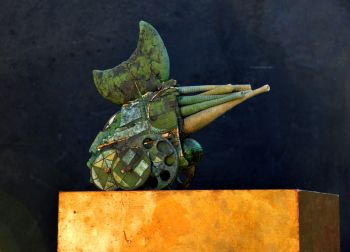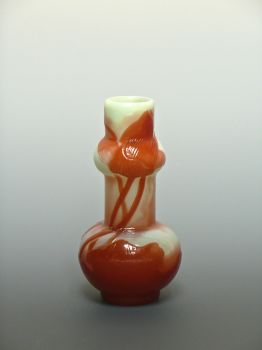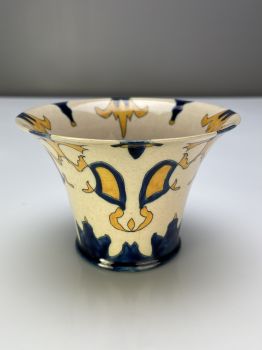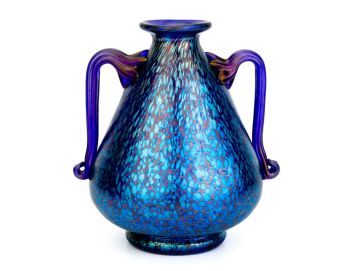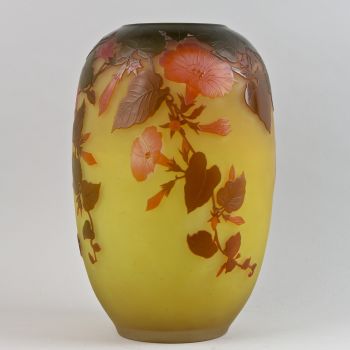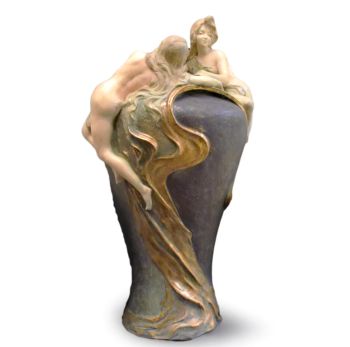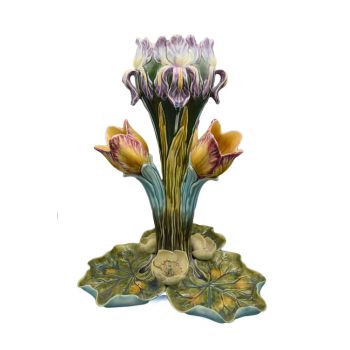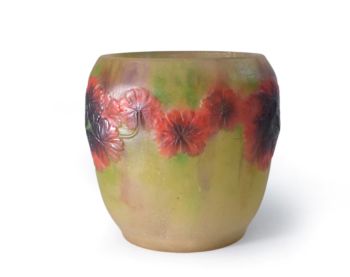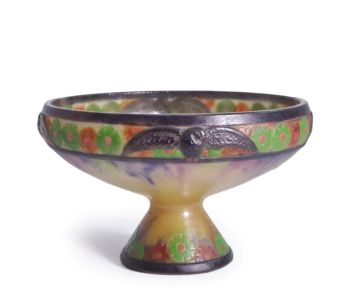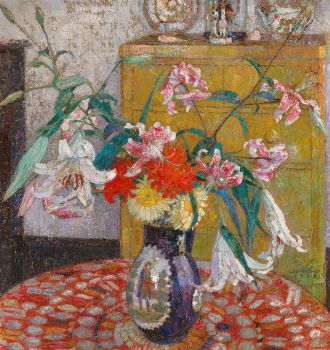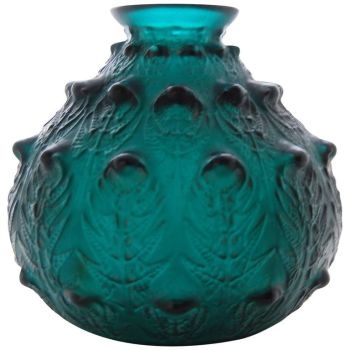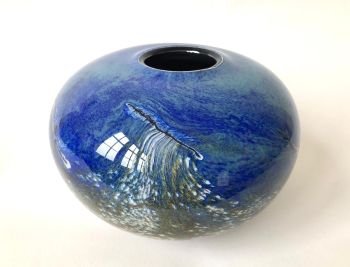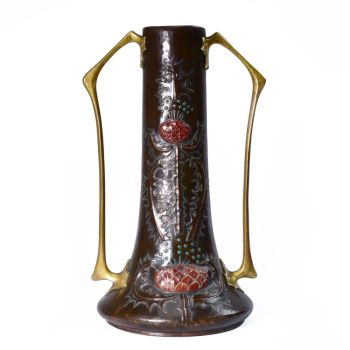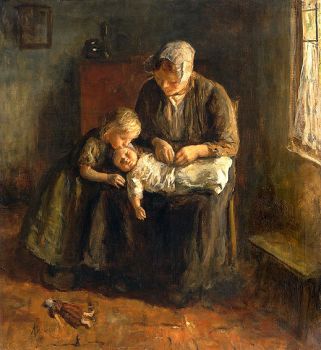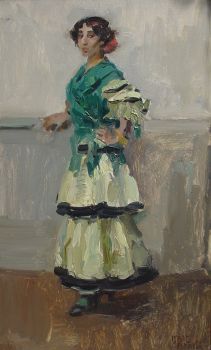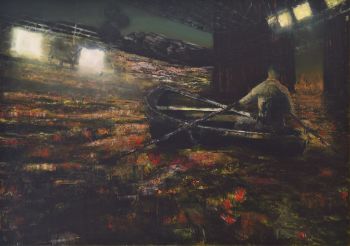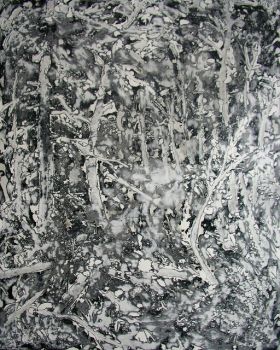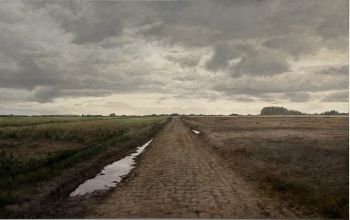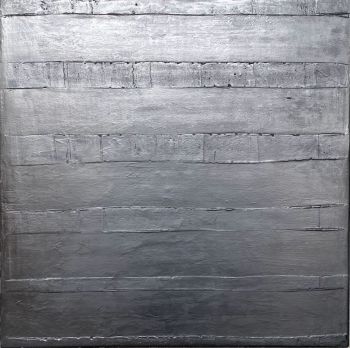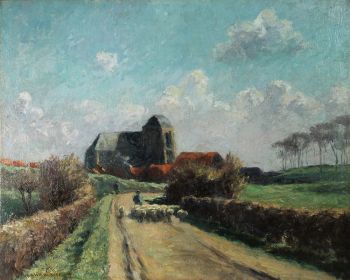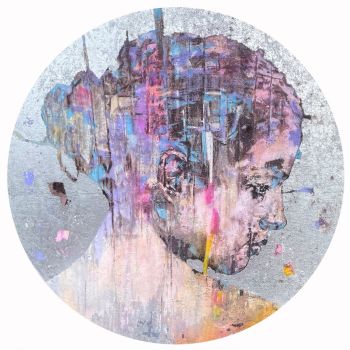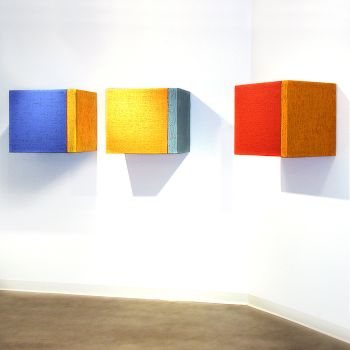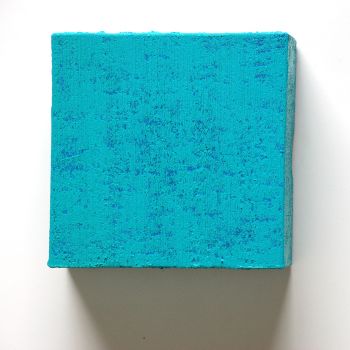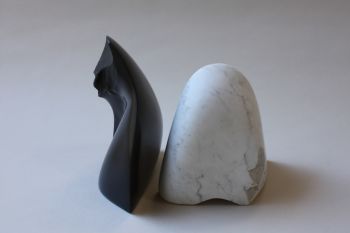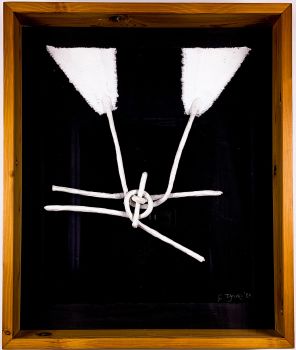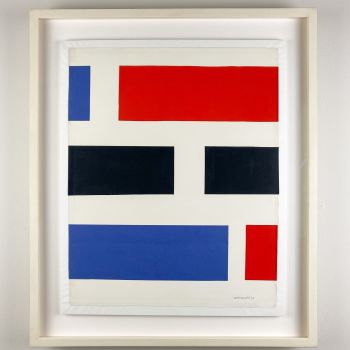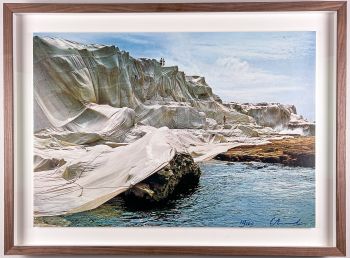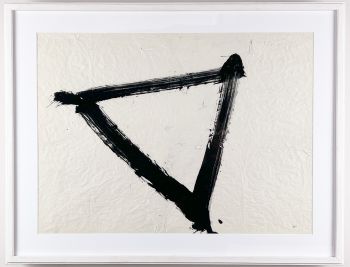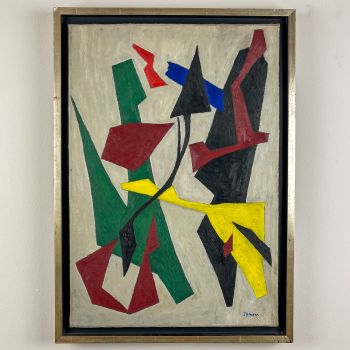Gunnar Nylund – A glazed stoneware vase / pitcher – Rörstrand Sweden, ca. 1955 1951 - 1960
Gunnar Nylund
PiedraEsmalteGresPintura
25 ⨯ 12 ⨯ 11 cm
ConditionVery good
€ 825
Van Kerkhoff Art
- Sobre la obra de arteA stoneware vase/pitcher, finished with a beautiful white “eggshell” glaze.
This object was designed by Gunnar Nylund and executed by the Swedish ceramics factory Rörstrand in the 1950s.
It is fully signed at the bottom: R (Rörstrand) Sweden with 3 crowns (after 1951 Rörstrand changed to the international spelling Sweden), GN (Gunnar Nylund).
About Gunnar Nylund
Gunnar Nylund (1904-1997) was a Swedish artist, ceramist and sculptor most known for his work for the Swedish ceramic manufacturer Rörstrand.
He was born in Paris to a Danish mother and a Swedish-Finnish father, both artists. His mother Fernanda Jacobsen-Nylund was a ceramist and his father Felix Nylund a sculptor. He grew up in Helsinki and moved to Copenhagen in 1917. In Denmark he received his education as an architect at the Royal Danish Academy of Fine Arts in the 1920’s. In 1929 together with Nathalie Krebs he started a ceramics workshop Nylund og Krebs that later was renamed to Saxbo.
In 1931 Nylund started working for the ceramics manufacturer Rörstrand in Lidköping in Sweden, becoming Rörstrand’s artistic director in 1937 and he continued to work there in this position until 1956. In this period Nylund became well known for his innovative feldspar glazes – popularized by renowned ceramists Berndt Friberg and Carl-Harry Stålhane – and his glazed stoneware animal sculptures.
After his time at Rörstrand he became artistic director at the Strömbergshyttans glassworks in Hovmantorp, Sweden and in the early 1960’s worked for the Nymölle Keramiska Fabrik in Lyngby, Denmark where he started producing stoneware.
Nylund crafted some 30 reliefs and sculptures commissioned for public spaces and many of his sculptures are part of museal collections ie: The National Museum in Stockholm, the Sèvres museum in Paris, the Röhsska museet in Gothenburg, the Ateneum museum in Helsinki and the Danish Museum of Art & Design.
Marked
Marked underneath the base: R (Rörstrand) Sweden with 3 crowns, GN (Gunnar Nylund)
Execution
Rörstrand, Sweden between 1951 and 1960.
Condition
This object is in good condition. No cracks or chips.
Literature
Mel Bryans – The Design Encyclopedia p. 535
Dimensions
Height 25 cm
Width 12,5 cm
Depth 11 cm - Sobre el artista
Gunnar Nylund (1904-1997) fue un artista, diseñador y escultor de origen danés y finlandés que trabajó principalmente en Suecia. Un verdadero pionero de las artes decorativas de la era de mediados de siglo, es considerado uno de los ceramistas más importantes del siglo XX y es mejor conocido por su trabajo con el muy famoso fabricante de cerámica sueco Rörstrand.
Nylund estuvo expuesto a diversas formas de arte a una edad temprana gracias a sus padres artistas. Esta exposición contribuyó en gran medida a sus habilidades multidisciplinarias y claramente sirvió bien a su variada carrera dentro de las artes decorativas. Aunque inicialmente estudió arquitectura en Copenhague, abandonó estos estudios para aceptar un puesto permanente en la fábrica de porcelana Bing & Gröndahl. Fue allí donde conoció a la ceramista danesa Nathalie Krebs, con quien desarrollaría su propia gama innovadora y, más tarde, el taller 'Saxbo' en 1930.
Su experimentación con nuevas formas impresionó mucho a Rörstrand, quien lo nombró director artístico en 1932 hasta 1955. Después de este período, Nylund asumió el cargo de director artístico de la cristalería Strömbergshyttan mientras aún trabajaba como diseñador de cerámica independiente. Aunque el cuerpo de trabajo de Nylund en vidrio es mucho menor que el de cerámica, está claro que también se destacó en el medio creando recipientes elegantes atemporales en hermosos colores.
Como muchos de sus conocidos contemporáneos, el trabajo de Nylund se define por una exploración de formas y técnicas modernas, además de sus suaves veladuras mate y hermosos colores tenues. Sus revolucionarios jarrones de gres son un gran ejemplo de ello en los que utilizó chamota, un material de arcilla en bruto, mezclado con plastilina. Este material aseguró que los objetos no colapsaran mientras se fabricaban, lo que permitió formas más delicadas y finas.
Más allá del gres y la cristalería, Nylund también es un consumado escultor al que se le encargó crear muchas obras para espacios públicos, teatros, bibliotecas y bancos. Su trabajo se encuentra en numerosos museos suecos, incluido el Museo Nacional de Estocolmo, así como en otros como el Museo Danés de Arte y Diseño, el Museo de Arte Ateneum en Helsinki y el Museo Nacional de Cerámica de Sèvres en París.
¿Está interesado en comprar esta obra de arte?
Artwork details
Related artworks
- 1 - 4 / 4
Børge Mogensen
Teak wood “dropleaf” desk – Søborg Møbler, Denmark circa 19551950 - 1960
Precio a consultarVan Kerkhoff Art
1 - 4 / 24- 1 - 4 / 24
Johann Loetz (Lötz) Witwe Klostermühle
Johann Loetz Witwe – Jugendstil Cobalt Papillon vaas1900 - 1910
Precio a consultarAntiques Emporium
René Lalique
Un florero "Fougeres" de color verde oscuro muy raro diseñado por R. Lalique1912
€ 8.950Lennart Booij Fine Art and Rare Items
 curada por
curada porSilla Scheepens
Paulus Franciscus Kromjong
Flores frente a Arearea Aka (alegría) por Gauguin '20th century
Precio a consultarZebregs & Röell - Fine Art - Antiques
1 - 4 / 24- 1 - 4 / 24
- 1 - 4 / 12

